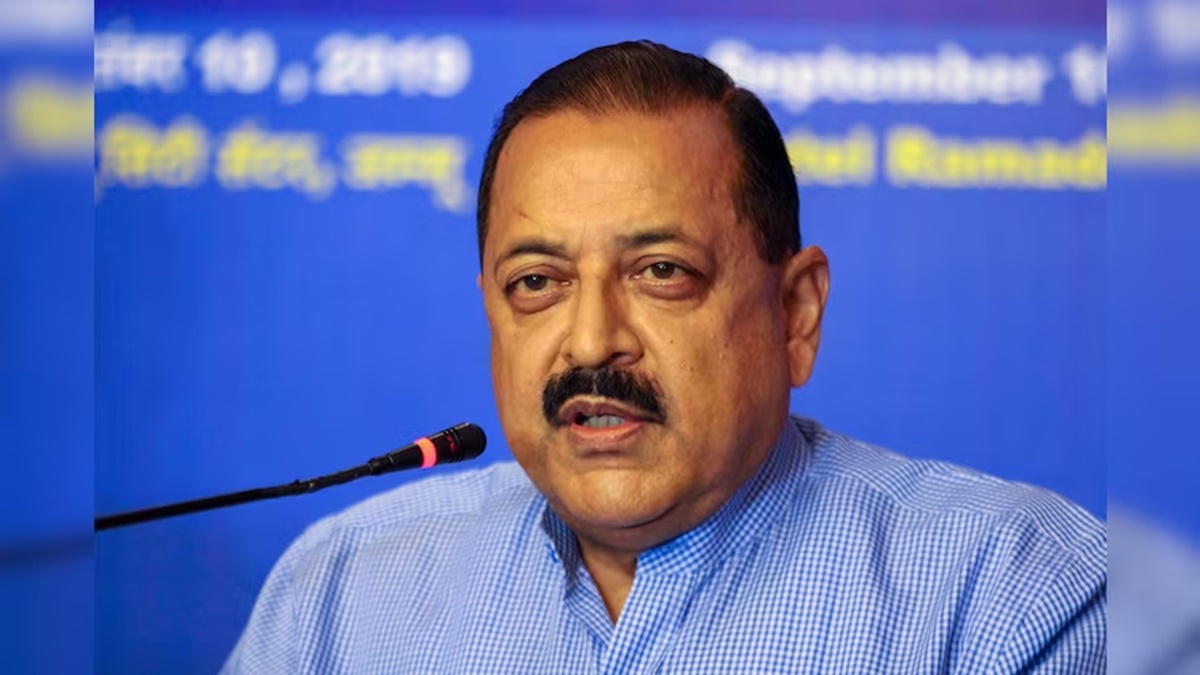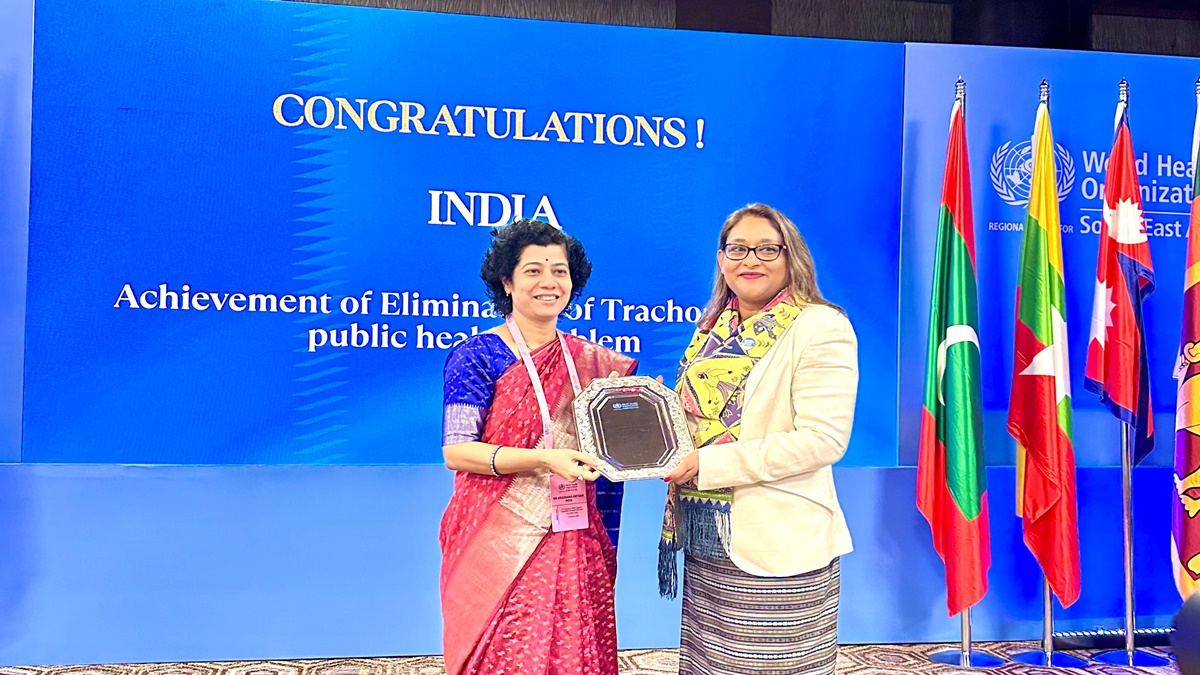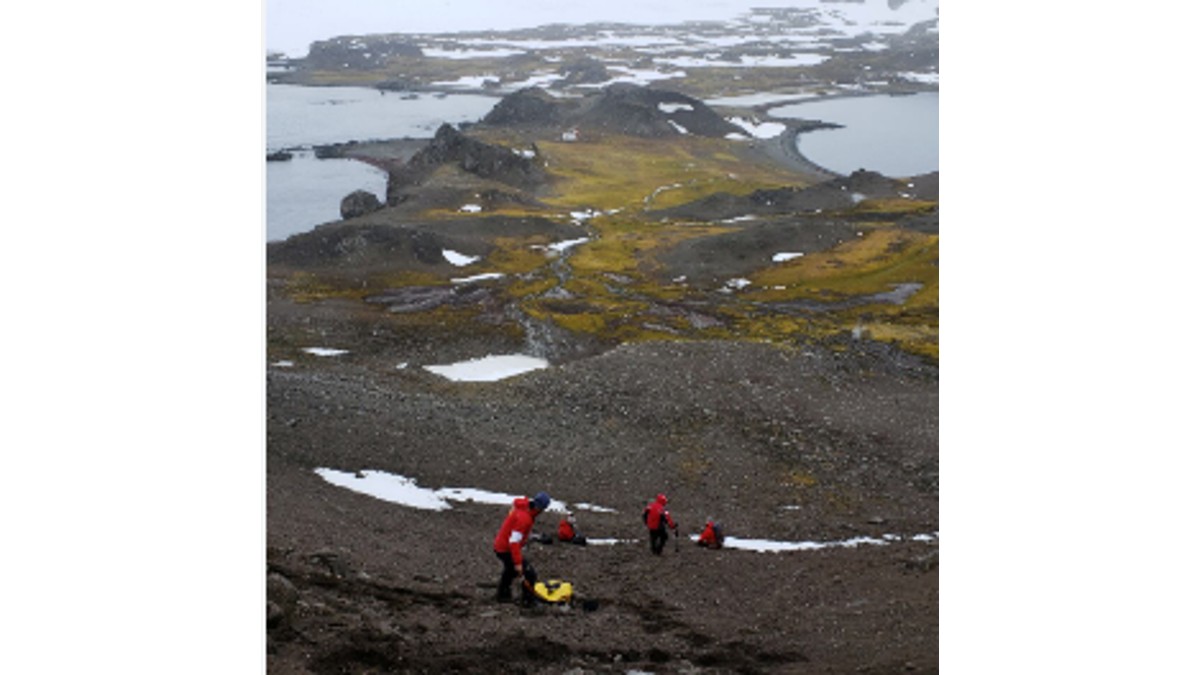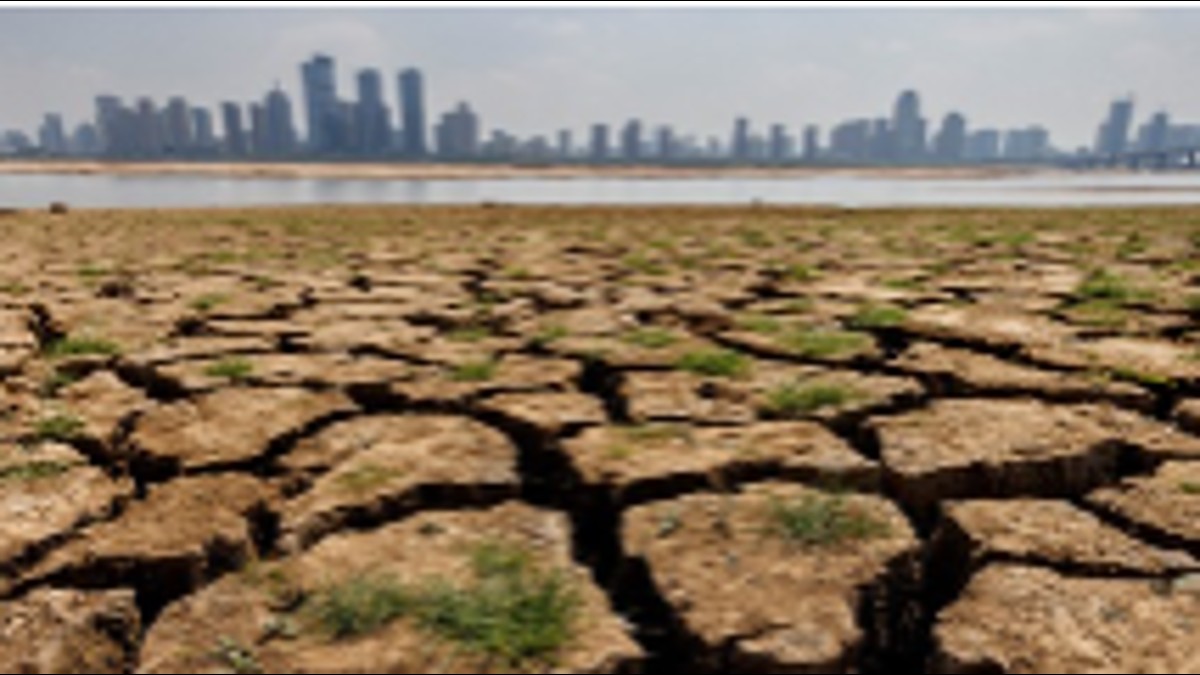That the earth is warming is not news anymore—neither is the fact that, as our planet warms more and crosses the 2- and 3-degrees Celsius thresholds, a lot of species will face the threat of extinction. The Intergovernmental Panel on Climate Change (IPCC) report 2022 had stated this very clearly in as many words. What’s also not news is that, every single day, people in India (and the world) are having to pay the price of living with climate change. Sometimes, the price they have to pay is spelt out in monetary terms —increased AC bills and fuel prices, or sustainable products that are expensive. Sometimes, though, the price is much more significant and personal. In India, from January till October, over 600 people have had to pay the price of climate change with their lives. Having lost their lives to cyclones, floods, heat waves, landslides, and cloudbursts—these people would have left behind hundreds more of grieving family members. The heat wave that gripped India this year, one of the worst in the country’s history, left at least 143 people dead, according to data shared by the Union ministry of health and family welfare. However, as per media reports, the number of deaths was at least 209. There were also over 40,000 cases of suspected heatstroke, and another 238 suspected deaths due to heatstroke between March and June. Temperatures in many parts of India, especially in the northern regions, touched 50 degrees Celsius, with the Central and state governments having had to set up special heat units in hospitals to cater to the increasing number of patients. While children, pregnant women, the elderly, and those with comorbidities faced an increased risk of heat-related illnesses, those who had to work in the peak hours under the sun also suffered immensely. While we all keep reading and hearing about climate change and its consequences every so often in the media, it still remains very easy to disregard the crisis as something that awaits us in the future. Now that three quarters of the year have passed already, we compiled data from the major climate tragedies that hit us this year, to see tangible proof of the price people have paid so far. Breaching danger mark At a time when some regions were struggling amidst a heat wave, cyclones and floods were hitting other parts of India. In May, eastern India and Bangladesh were hit by cyclone Remal, which led to the loss of 37 lives. It made landfall at West Bengal’s Sagar island on May 26. Amid relentless rain and the cyclone, schools and colleges had to be closed, and operations suspended at the airport in Kolkata. Over 1,50,000 people had to be evacuated from the Sundarbans region. Just a month after the cyclone, operations at Delhi’s Indira Gandhi Airport Terminal 1 were affected, too, when, following a few hours of rain, a portion of an extended canopy at the terminal collapsed, leading to the death of a cab driver. This was on June 28, when Delhi received 228.1 mm of rainfall in a single day, the highest in at least 88 years, as per the India Meteorological Department (IMD). On the heels of the T1 fiasco, another tragedy hit Delhi when three UPSC aspirants got stuck in the flooded basement of Rau’s IAS Study Circle in Old Rajinder Nagar and died. The rains also cost the lives of a 22-year-old woman and her 3-year-old son in Delhi’s Mayur Vihar after they fell into an open drain that they couldn’t see due to the waterlogging. At least 14 lives were lost to relentless rains in Delhi alone this year. In Manipur too, amidst the ongoing conflict, floods followed cyclone Remal, which damaged over 24,000 houses and affected close to 200,000 people in May. Just a month after the floods, in July, incessant rain in Imphal also led to the death of an individual as the Iril river breached the safety mark, and submerged parts of the state capital. As in previous years, the northeastern state of Assam, too, saw severe floods in July, that affected over 600,000 people and led to at least 109 deaths, as per official figures. The media reported that all the rivers in Assam breached the ‘danger’ mark, as large parts of the state, including Kaziranga National Park, were inundated. Floods also hit Tripura in August and claimed as many as 32 lives, while displacing over 42,000 families and affecting over 1.7 million people, as per state officials. The state government even declared Tripura a ‘natural calamity affected area’ as climate change-induced heavy showers wreaked havoc in South Tripura. As the state grappled with the tragedy, people lost their lives to landslides and drowning. The state government had to evacuate people to over 300 relief camps. In July and August, other states in India, too, saw intense patches of rainfall. Heavy showers in Rajasthan claimed at least 27 lives, as a “low pressure area” was formed over many parts of the state. In Gujarat, as many as 28 people died due to drowning as rains and floods swept the state. Waterlogging and falling trees only added to the menace. Over 20,000 people were displaced internally in the state due to the floods, as per media reports. Similarly, in Telangana and Andhra Pradesh, too, over 17,000 people had to be evacuated as incessant rain hit several parts of the two states. At least 35 lives were lost and over 100,000 hectares of agricultural land damaged. Cloud of uncertainty The northeastern, southern, or western regions of India weren’t the only ones battered by rains. A majority of north India’s hilly regions saw, too, saw cloudbursts and flash floods. In July, after torrential rains in Uttarakhand’s Kumaon that killed at least 14, the National Disaster Response Force had to be called in to monitor the region as the threat of a flood-like situation loomed large. Towards the end of July and the beginning of August, a series of cloudbursts hit Himachal, too, affecting Kullu, Mandi, and Shimla districts. Heavy showers and flash floods followed the cloudbursts which led to at least 22 deaths, as per reports, while thousands were affected. Interestingly, while Kashmir faced a large spell of dry summer and heat wave this year, which caused huge losses for farmers, the state also experienced a cloudburst in August in Ramban. At least three people were reported to have been swept away in the flash floods in Rajgarh tehsil. Fury of nature The fury of nature was felt in south India too. On July 30, a series of landslides hit Mundakkai, Chooralmala, Attamala and Punjirimattom in Kerala’s Wayanad district. What followed was incessant rain, hills collapsing, and boulders sliding. While official figures said that at least 250 lives were lost, experts estimated that the number was over 400. The state also bore an estimated loss of over Rs 1,200 crore. Cause for alarm For India, the number of deaths (over 600 and counting) is and should be a cause of alarm. Abinash Mohanty, sector head of climate change and sustainability at IPE Global, and expert reviewer of IPCC-AR(6), says, “We are a country aspiring to become a $5-trillion economy . At a point when we are aiming to become a global leader in climate action, any loss of lives is a stark reminder of where we stand.” So, where are we going wrong? And where do we need to course correct as of now? For starters, Mohanty explains that while we have early warning systems in place to help with disaster preparedness, we have not looked at the “compounding effect” that the disasters come with; the attributional correlation is missing. “For instance, when it comes to landslides, we document the number of lives lost. What about the economic impact? What about the number of livelihoods swept away? After the Kerala floods of 2018, why did we not factor in the climate risk while building newer infrastructure? Why was our aim not to build flood resilient infrastructure? Why did we only build with a short term plan in mind, instead of factoring in the area’s climate and risks with a long-term plan at hand?” asks Mohanty. PK Joshi, professor at the School of Environmental Sciences and chairperson of the Special Centre for Disaster Research at Jawaharlal Nehru University in Delhi, nods in agreement. “Poor land use practices, rapid and unplanned urbanisation, and encroachments often deprioritise comprehensive planning. The fragile ecosystems are not given much preference in the planning,” he explains. Mohanty agrees. According to him, what we also need to realise is that preparedness and prevention go hand in hand. “One can’t and shouldn’t negate the other. Our approach is more reactive than proactive. After a natural calamity happens, our rescue teams and the NDRF and the army reach the spot to help out people. Sadly, this has become the ‘business as usual’ approach, when it should actually be the last resort.” The problem is also that issues that demand urgent attention are not being addressed properly. Joshi emphasises that internal migration, the state of climate refugees, the water scarcity, the climate change-induced food security, and economic losses all need to be acknowledged and worked upon as challenges that would need “inclusive climate policies.” Time for action When the human loss is in such stark figures, how does one begin to prioritise prevention over preparedness to avoid these extreme weather events? Joshi says that, for one, we need to understand that these events cannot be entirely avoided. However, we do need to take measures to mitigate the impact and reduce vulnerabilities. So, as starting points, we should be using tech to our advantage to improve our forecasting and early warning systems. We need to invest in climate resilient infrastructure, green spaces, and storm water management at all levels. Importance must also be given to post-disaster recovery and stringent land-use regulations. “The degrading natural landscapes need assisted afforestation and reforestation, water conservation, and the rural landscape with climate-smart agriculture initiatives. The wetlands, mangroves, and the river systems need preservation, restoration, and maintenance. The urban planning needs to incorporate sustainable smart city design including permeable pavements, green roofs, proper zoning laws, and disaster resilience plans in place,” adds Joshi. Another thing, points out Mohanty, is that we need to update our climate action plans periodically. India is a signatory to the global commitments to disaster risk reduction like Sendai Framework on Disaster Risk Reduction. But experts have estimated that at least 35-37% districts in India don’t have an updated disaster management plan. “Currently, we have a top-to-bottom approach to assess national disasters. But we need a bottom-up approach, where we evaluate the macro and micro climate of each block, each sub-district, and each district—because that is just how much the environmental parameters change with every few kilometres. We need hyper granular risk assessments, and an impact assessment,” adds Mohanty. According to Joshi, what’s also important is engaging corporates through public-private partnerships, the community, international bodies, and civil society to not only mitigate the impact of extreme weather events but to enhance preparedness for future challenges as well. At the same time, says Joshi, “All initiatives towards climate change and climate change induced disaster mitigation and adaptation need to be monitored for accountability mechanisms.” None
Popular Tags:
Share This Post:


Former One Direction member Liam Payne dies after falling from a balcony in Buenos Aires
October 17, 2024What’s New
Spotlight
Today’s Hot
-
- October 15, 2024
-
- October 11, 2024
-
- October 10, 2024
Featured News
Latest From This Week
Navaratri 2024: How dehydration during fasting can increase the risk of UTIs
LIFE
- by Sarkai Info
- October 9, 2024
Subscribe To Our Newsletter
No spam, notifications only about new products, updates.




























